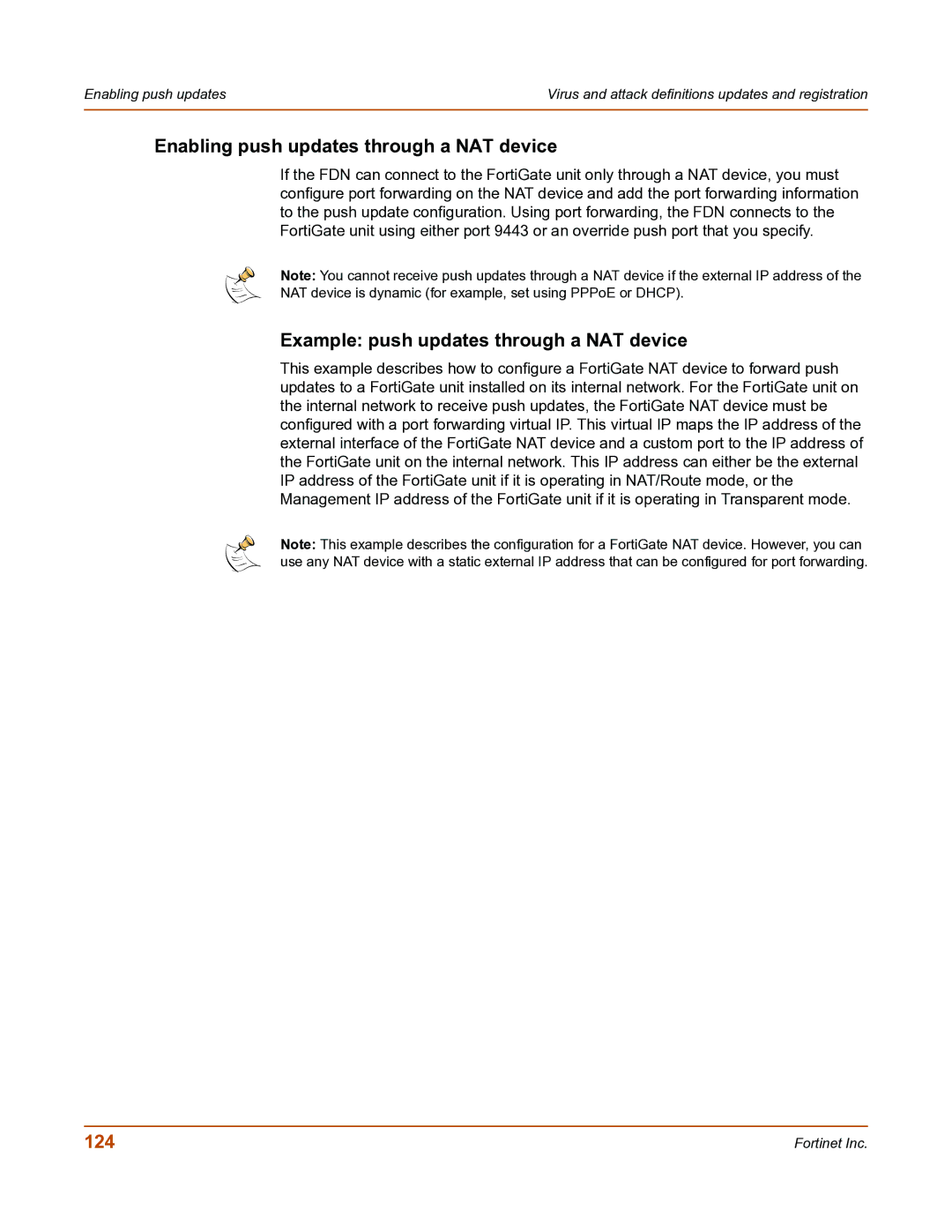
Enabling push updates | Virus and attack definitions updates and registration |
|
|
Enabling push updates through a NAT device
If the FDN can connect to the FortiGate unit only through a NAT device, you must configure port forwarding on the NAT device and add the port forwarding information to the push update configuration. Using port forwarding, the FDN connects to the FortiGate unit using either port 9443 or an override push port that you specify.
Note: You cannot receive push updates through a NAT device if the external IP address of the
NAT device is dynamic (for example, set using PPPoE or DHCP).
Example: push updates through a NAT device
This example describes how to configure a FortiGate NAT device to forward push updates to a FortiGate unit installed on its internal network. For the FortiGate unit on the internal network to receive push updates, the FortiGate NAT device must be configured with a port forwarding virtual IP. This virtual IP maps the IP address of the external interface of the FortiGate NAT device and a custom port to the IP address of the FortiGate unit on the internal network. This IP address can either be the external IP address of the FortiGate unit if it is operating in NAT/Route mode, or the Management IP address of the FortiGate unit if it is operating in Transparent mode.
Note: This example describes the configuration for a FortiGate NAT device. However, you can use any NAT device with a static external IP address that can be configured for port forwarding.
124 | Fortinet Inc. |
